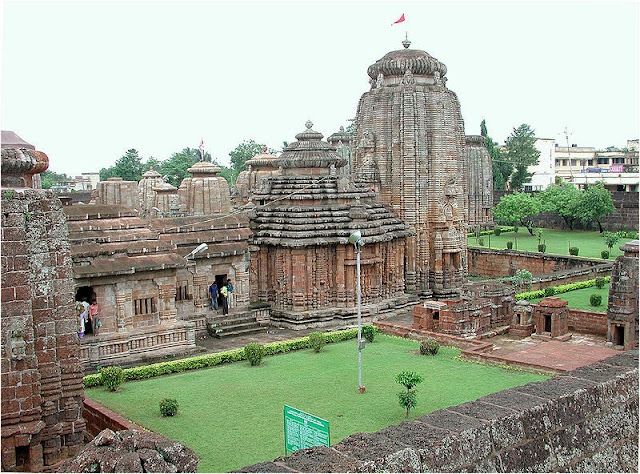Lingaraj Temple is a Hindu temple dedicated to Harihara, a form of Shiva and is one of the oldest temples of Bhubaneswar, the capital of the East Indian state of Odisha. The temple is the most prominent landmark of the Bhubaneswar city and one of the major tourist attractions of the state.
The Lingaraja temple is the largest temple in Bhubaneswar. The central tower of the temple is 180 ft (55 m) tall. The temple represents the quintessence of the Kalinga Architecture and culminating the medieval stages of the architectural tradition at Bhubaneswar. The temple is believed to be built by the kings from the Somavamsi dynasty, with later additions from the Ganga rulers. The temple is built in the Deula style that has four components namely, vimana (structure containing the sanctum), jagamohana (assembly hall), natamandira (festival hall) and bhoga-mandapa (hall of offerings), each increasing in the height to its predecessor. The temple complex has 50 other shrines and is enclosed by a large compound wall.
Lingaraj means "The king of Lingam", the symbol of Saivism. Shiva was worshipped as Kirtivasa and later as Harihara and is commonly referred as Tribhuvaneshwara (also called Bhubaneswar), the master of three worlds, namely, heaven, earth and netherworld). His consort is called Bhuvaneshvari.
Bhubaneswar is called the Ekamra Kshetra as the deity of Lingaraj was originally under a mango tree (Ekamra) as noted in Ekamra Purana, a 13th-century Sanskrit treatise. The temple is active in worship practises, unlike most other temples in Bhubaneswar and Shiva is worshipped as Harihara, a combined form of Vishnu and Shiva. The temple has images of Vishnu, possibly because of the rising prominence of Jagannath cult emnating from the Ganga rulers who built the Jagannath Temple in Puri in the 12th century.
Google Map
View Larger Map






